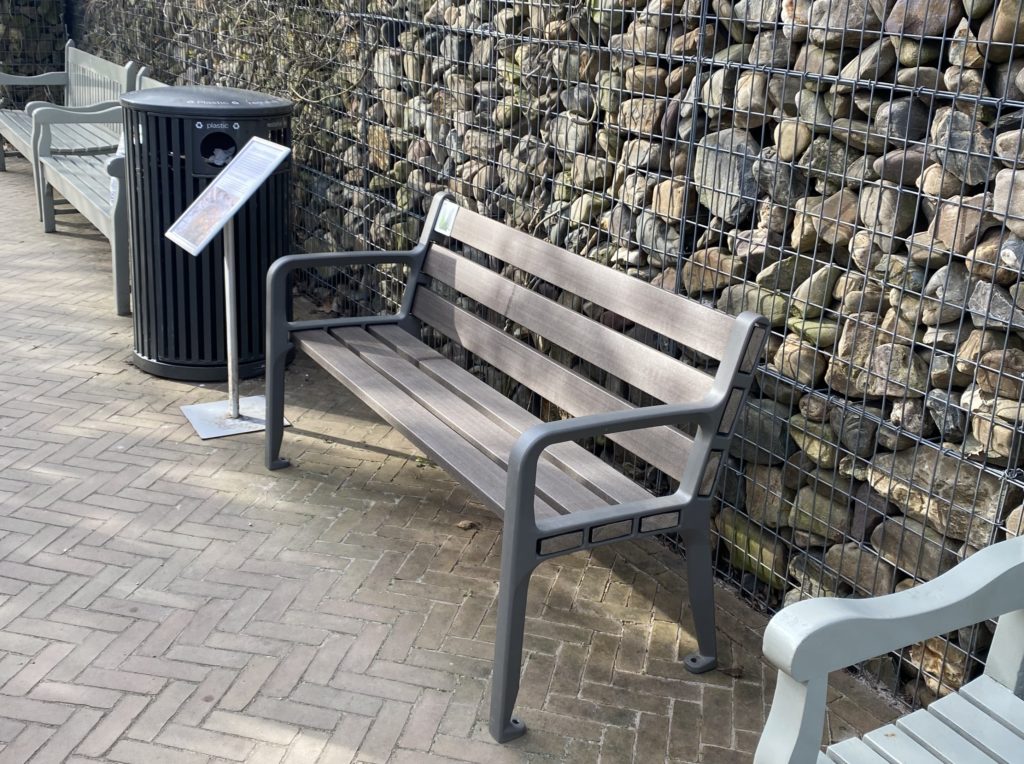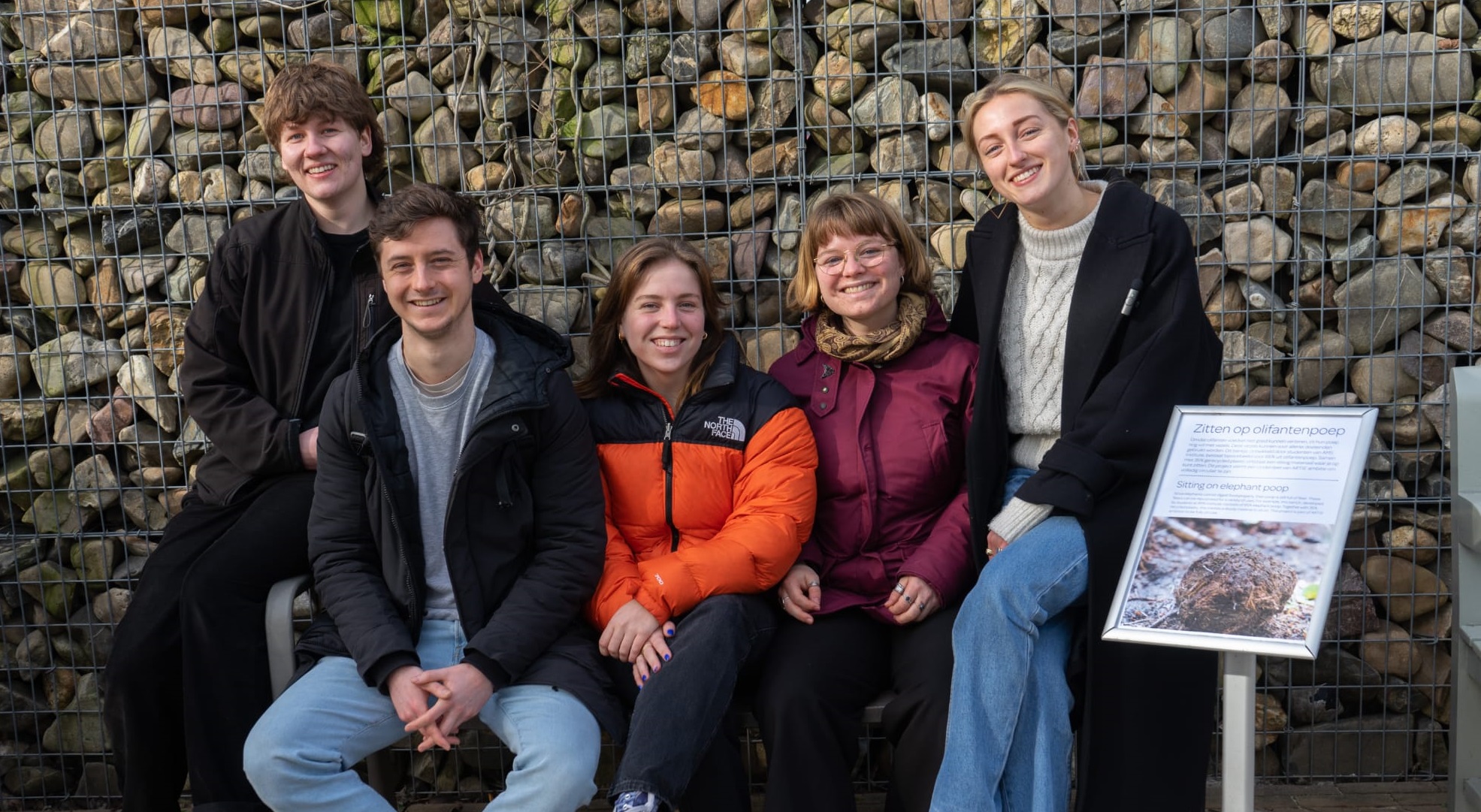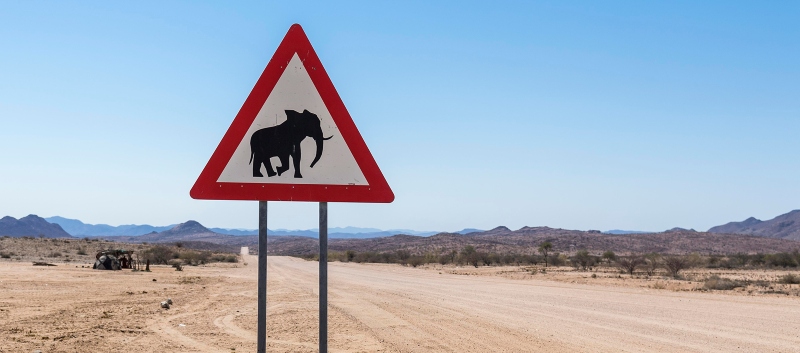Yes, it’s a popular topic, says Romée Lems. A lot of students were interested in doing this assignment for their Master’s in Metropolitan Analysis Design and Engineering. What could you do with the poo produced by the elephants in Artis Zoo in Amsterdam, other than spread it over fields? Lems and four of her fellow students were the lucky ones who were given the assignment. The result was a bench. And no, it doesn’t smell or stain your clothes.
The animals in Artis produce a lot of poo between them, and none more so than the Asian elephants. The four elephants in Artis can produce 300 kilos of poo daily. This is because they don’t digest much of the plant material they eat. About half of what goes in at the front end as feed comes out at the back end as dung.

The droppings, like those of all the animals except the great apes, are spread on the land of a nearby farmer. ‘In itself, that’s fairly sustainable and circular,’ says Lems. ‘In fact, some of the elephants’ feed comes from the same farmer’s land.’ But the group still decided to look for an alternative use, not least because there is already a surplus of manure in the Netherlands. ‘And we want to use this project to get people thinking about circularity as well.’
Furniture
The idea of turning the manure into a piece of furniture was more or less copied from elsewhere. Lems: ‘We got into conversation with someone from the Design Academy in Eindhoven who uses cow manure as a material for making furniture. The manure is dried and pressed in a heat press. So we tried doing the same with elephant dung.’
You can question the sustainability of our bench too
Romée Lems, Metropolitan Analysis Design and Engineering student
The result was disappointing at first, though. The sheet material turned out not to be sturdy enough and was not rainproof. But thanks to input from Circulus, a company that mixes fibres with plastic waste (from perfume bottles, among others), they did eventually get a sustainable product. The poo bench contains 65 per cent manure. The prototype is now standing in the zoo with an information board next to it explaining what is special about the bench.
Pinewood
For the students, this means the project has been successfully completed. It is not yet clear whether more such benches will follow, says Lems. ‘Artis would like to become completely circular. The wooden benches they have in the zoo now are made of pinewood from Sweden. But you can question the sustainability of our bench too. Because it contains plastic, for instance.’

 The students on their poo bench. From the left: Romée Lems, Stijn van den Bergh, Antonia van der Grinten, Evelien Dekker and Lune Walder. Photo Artis
The students on their poo bench. From the left: Romée Lems, Stijn van den Bergh, Antonia van der Grinten, Evelien Dekker and Lune Walder. Photo Artis 

